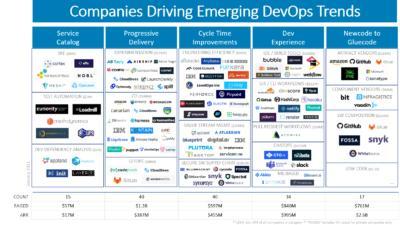Systems | Development | Analytics | API | Testing
Blog
Top 5 Reasons for Using Apache JMeter
If you haven’t heard of Apache JMeter, then here is a short intro on what is it and how it works. We’ll keep this article short and jump straight to the list of top reasons to use Apache JMeter: Apache JMeter has a GUI for designing test scenarios, however the command-line is used for actually running the tests (run your JMeter tests in the cloud with JMeter Load Testing tool from LoadFocus).
Introducing the Ably Flutter plugin
Today, we’re pleased to support Flutter’s growing community of builders by releasing Ably’s Flutter plugin v1.0. This makes it easy for developers to add WebSocket-based pub/sub messaging to their Flutter applications. Flutter has grown incredibly over the past few years, providing a platform to build modern applications. Increasingly, developers are looking to build event-driven applications where user interactions play out in realtime.
Jamstack application with Gatsby and Bugfender
Jamstack is a modern web development architecture based on client-side JavaScript, reusable APIs, and prebuilt Markup. It is not yet a full technology stack like MEAN, MERN or LAMP. Rather, it is an architectural concept built using JavaScript, API and Markup.
Trends in 2021 Dev-Led Landscape
Nowadays developers are in the driver’s seat regarding a lot of decisions for the tools they use. In this update from Tyler Jewell, he covers what he sees are the Top 5 trends that will take place this year. While it’s a bit of a crowded chart, he plots the companies that he sees driving these trends. If you drill into the Service Catalog trend, Jewell sees a couple of different groups working on ways to help developers deal with the deluge of Services (aka APIs).
Why Data Engineers Should Consider Microsoft Azure
Modern applications don’t function in isolation. To get the most out of the enterprise apps you build or buy, you’ll have to connect them to other applications. In other words, data engineers have to engage in effective application integration to achieve their business goals. Sometimes, this means connecting one application directly to another. But this is a rare occurrence in digitally transformed industries.
5 Ways to Process Small Data with Hadoop
From system logs to web scraping, there are many good reasons why you might have extremely large numbers of small data files at hand. But how can you efficiently process and analyze these files to uncover the hidden insights that they contain? You might think that you could process these small data files using a solution like Apache Hadoop, which has been specifically designed for handling large datasets.
Building a Machine Learning Application With Cloudera Data Science Workbench And Operational Database, Part 3: Productionization of ML models
In this last installment, we’ll discuss a demo application that uses PySpark.ML to make a classification model based off of training data stored in both Cloudera’s Operational Database (powered by Apache HBase) and Apache HDFS. Afterwards, this model is then scored and served through a simple Web Application. For more context, this demo is based on concepts discussed in this blog post How to deploy ML models to production.
Digital Transformation is a Data Journey From Edge to Insight
Digital transformation is a hot topic for all markets and industries as it’s delivering value with explosive growth rates. Consider that Manufacturing’s Industry Internet of Things (IIOT) was valued at $161b with an impressive 25% growth rate, the Connected Car market will be valued at $225b by 2027 with a 17% growth rate, or that in the first three months of 2020, retailers realized ten years of digital sales penetration in just three months.
How to configure clients to connect to Apache Kafka Clusters securely - Part 3: PAM authentication
In the previous posts in this series, we have discussed Kerberos and LDAP authentication for Kafka. In this post, we will look into how to configure a Kafka cluster to use a PAM backend instead of an LDAP one. The examples shown here will highlight the authentication-related properties in bold font to differentiate them from other required security properties, as in the example below. TLS is assumed to be enabled for the Apache Kafka cluster, as it should be for every secure cluster.








